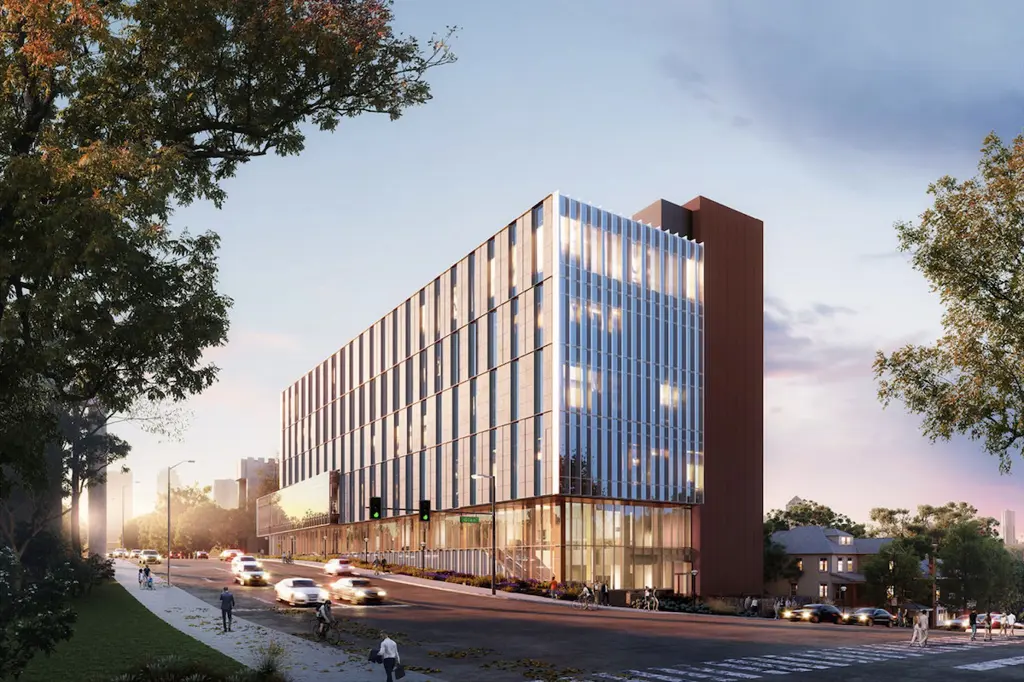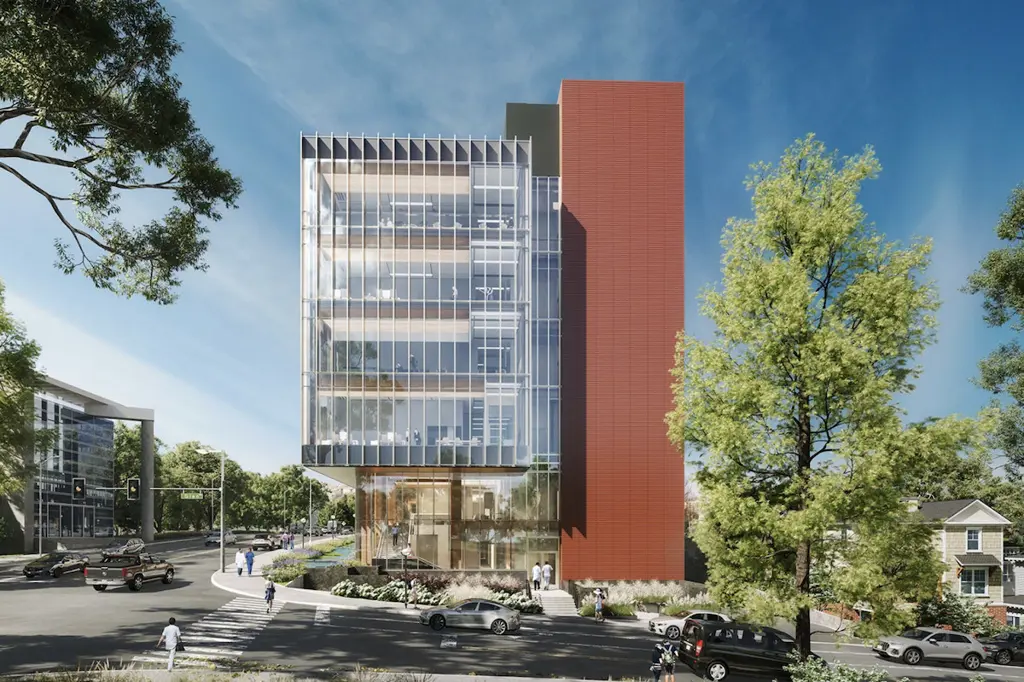The University of Michigan has begun construction on a new 142,000-square-foot College of Pharmacy building at the intersection of Glen Avenue and East Huron Street in Ann Arbor, with completion scheduled for fall 2025. The building's design employs mass timber construction, which is projected to reduce embodied carbon by 40%, avoiding approximately 1,500 metric tons of CO₂ equivalent compared to traditional steel.

The project is being led by RDG Planning & Design, with engineering support from Alvine Engineering (mechanical, electrical, and plumbing), TD2 Engineering & Surveying (structural), and Midwestern Consulting (civil). The project is registered with the U.S. Green Building Council and is targeting LEED Gold certification, reflecting the university’s broader commitment to carbon neutrality and sustainable infrastructure. Energy efficiency features include chilled beam HVAC systems and high-performance systems contributing to an estimated 52% energy cost reduction compared to the ASHRAE 90.1-2013 (a) baseline. This is partially due to the university's user of on-campus power generation.

The building includes a comprehensive stormwater management system with underground tanks capable of storing runoff from a 100-year storm, promoting groundwater recharge and reducing strain on municipal systems.
. Landscaping incorporates native plant species that do not require irrigation, further supporting water conservation goals.
. The building is located near public transportation to support accessibility and reduce emissions from commuting. The structural benefits of mass timber — including strength-to-weight ratio, prefabrication, and fire-resistant properties via surface charring — allow for faster construction and optimized use of a narrow, space-constrained site. The new facility will consolidate previously dispersed College of Pharmacy functions into a single location, enhancing research, teaching, and operational efficiency. The design prioritizes occupant well-being through natural materials, biophilic aesthetics, and indoor environmental quality, aligning with the university’s health-centered mission. Dean Vicki Ellingrod emphasized the connection between environmental sustainability and health outcomes, reinforcing the College of Pharmacy’s alignment with institutional climate goals.
.